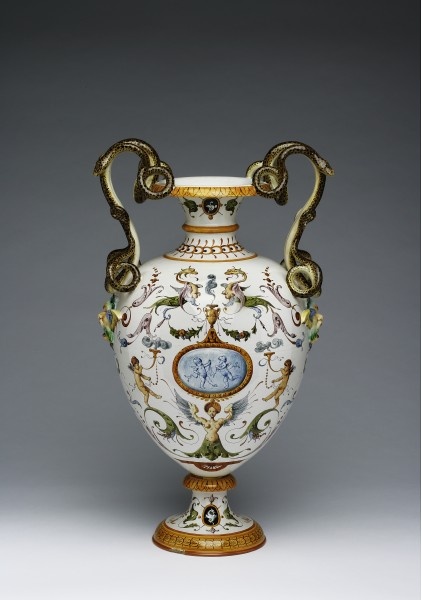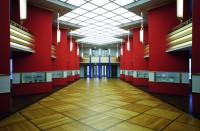Die seit 1735 bestehende Manufaktur der Conti Ginori hat gewichtigen Anteil an der Neubelebung der Majolika-Malerei, die um 1800 weitgehend zum Stillstand gekommen war. Ausgelöst durch einen Restaurierungsauftrag in den 1840er Jahren brachte Ginori im großen Umfang von Stücken des 15. und 16. Jahrhunderts inspirierte Majoliken auf den Markt und erzielte damit bereits auf der Londoner Weltausstellung von 1851 Aufmerksamkeit. Die hier abgebildete Schlangenhenkelvase ist ein ebenso prächtiges wie virtuoses Stück aus dieser Produktion.
Alter Bestand.
en

